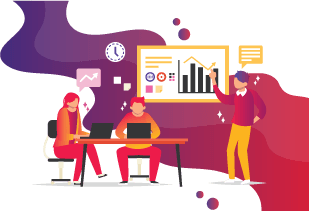Why is E-commerce Booming in the Philippines?
Ecommerce is a business model that involves transactions of purchase and sale of goods through the internet. One popular transaction is online shopping, where customers can buy online through desktop, laptop, smartphones, tablets, or smartwatches.
Two of the thriving e-commerce models are business-to-consumer (B2C) and business-to-business (B2B). A store or other company offers directly to end-users in B2C e-commerce. In contrast, one enterprise sells to another in B2B eCommerce. Most platforms now offer a combination of both to meet changing demands and needs in the e-commerce landscape.
The Philippines have seen massive growth in the e-commerce industry, especially in the last five years but has exponentially propelled last 2020 due to the COVID-19 pandemic. Its thriving development is seen to grow four times higher by 2025, amounting to $12 billion. Among all contributors to the country's GDP, the digital economy increased by about 55% last 2020. By 2022, the ecommerce industry will plausibly make up half of the country's GDP.
Let's delve deeper into why e-commerce is booming here in the Philippines and the opportunities present for SMEs and other businesses to reach their full potential through the digital world.
Statistics Show Overall Positive Surge

As of the latest statistics of January 2021 and based on 2020 data reported by Hootsuite and We Are Social, 38.88 million Filipinos purchased goods via the internet, amounting to up to $3.55 billion with an annual growth of +42.5%
In comparison, the nation ranked number 1 in terms of social media use and time spent online. Enterprises concurred that this makes the Philippines an optimal location for e-commerce to expand. In totality, the country has about 73.91 million internet users, with 23% increased activity in online shopping and spends around 10h and 56m usage per day. Most of which are accessed through a mobile device (96.5 %).
For the percentage share of consumers aged 16-64, around 80.2% purchased a product online through any device, and about 89.3% intently searched for a product or service to buy. All categories of e-commerce products, from fashion, appliances to electronics and food, grew positively by an average of 42% as a whole. The only category that significantly dropped is travel, mobility, and accommodation which is understandable due to the COVID-19 pandemic travel restrictions.
Among the top mobile apps downloaded were e-commerce platforms, particularly Lazada and Shopee, each yielding about 30.9m visits and 21.9m visits, respectively. All of this information shows that the overall growth of e-commerce in the Philippines is positive for the next coming years, making it one of the best avenues for businesses to succeed.
The Big Shift of Filipino Consumers and Entrepreneurs to Ecommerce
The explosive surge of e-commerce in the country happened during the height of the Covid-19 pandemic, where most traditional retail stores are mandated closed, and people are forced to undergo quarantine at home. Filipinos' lifestyles are becoming increasingly digital. The market's behavior changed significantly not only by movement limitations but also because of the convenience they realized from shopping online.

Many consumers prefer purchasing over the internet because of multiple reasons such as:
- Diverse payment options
- Access to discounts, vouchers, and reward programs
- Chance to research and review products and services before buying
- Can make multiple transactions in one seating any time of the day
- Purchase items not available in physical stores across different platforms
- Personalized shopping experience with recommendations made for you.
- Real-time customer service
Like consumers, entrepreneurs' way of doing business also changed drastically where they choose to open and expand their businesses digitally. Convenience is also key to why vendors choose to sell online. There are many advantages an entrepreneur can get in going digital compared to selling in a brick-and-mortar store. Some of which are:
- Reduced costs for start-up businesses since there's no construction needed and smaller staffing
- Access to millions of customers anytime, anywhere
- Gain valuable customer and business operation data through built-in analytics
- Convenient communication channels with customers
Philippine Ecommerce Shows No Sign of Slowing Down
The Philippines' e-commerce industry has a lot of opportunities for progress and growth.
This is mainly motivated by Filipino customers who live a very digital lifestyle.
Even after the pandemic, around 73% of Filipino consumers are likely to sustain or increase their p online shopping activities.

"Online shopping and marketing platforms will play a bigger role in the new normal as businesses and consumers increase the use of electronic transactions, including cashless payment systems and other financial technology platforms. Businesses need to innovate and make full use of technology to resume operations and cater to consumer needs and preferences while still managing risks of Covid-19 infection. "Online transactions will now become the new standard for engaging with clients, buyers, and suppliers. Therefore, both public and private sectors need to invest in digital technology."
-Acting NEDA Secretary Karl Kendrick Chua
The government supports expediting eCommerce growth, as evident on their Philippine E-Commerce Roadmap 2016-2020. It aims to address or reform challenges and barriers that hinder the country's full potential of ecommerce development. Part of the expectations we see in the future would be a more systematic government regulation for proper taxation, protection of consumers, and infrastructure improvements.
With an overall positive outlook and the present thriving situation of the e-commerce industry in the Philippines, everyone who wants to open a business is encouraged to take advantage of it.
Establish Your Online Store Starting Today
Thinking of starting your campaign? Let us help.
Our team at LOKAL will help you scope out your web design project, provide analysis on your existing marketing status, or do initial scoping on your long-term marketing campaign.
You can also send us an email at hello@agencylokal.ph.
Sign up to our newsletter
We will get back to you as soon as possible
Please try again later
De Jesus Oval, Bonifacio Global City, 1630, Taguig City, Philippines
Email: hello@agencylokal.ph
www.agencylokal.ph
LOKAL provides boutique business solutions for small businesses in Australia and the Philippines. With decades of experience,
LOKAL
provides search engine optimisation, digital marketing, digital public relations, executive recruitment, and outsourced team operations.


